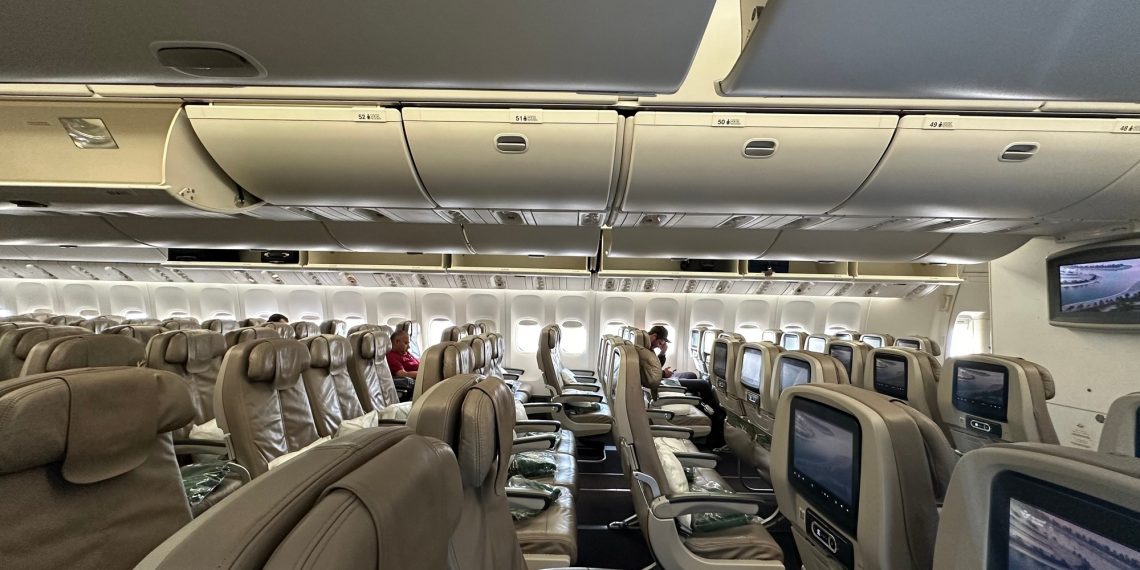Saudi Arabia is rapidly positioning itself as a major business hub, driven by significant investments in infrastructure, technology, and tourism. Central to this transformation is Saudia, the nation’s flagship airline, which is playing a key role in reshaping business travel within the region and beyond.
Strategically located between Europe, Asia, and Africa, Saudi Arabia offers a natural gateway for global commerce. Recent reforms and incentives for foreign investors, combined with major projects like the Red Sea International Airport and NEOM, are set to further enhance the country’s international connectivity and appeal.
Saudia, established in 1945, has grown into a prominent airline with over 100 destinations and more than 530 daily flights. The airline has expanded its network with new routes and partnerships, making it easier for business travelers to reach major economic centers worldwide. Its digital visa program also allows visitors to book trips seamlessly and enjoy extended stopovers in the Kingdom, blending business with cultural discovery.
For business travelers, Saudia’s Business Class offers spacious seating, fully flat beds, and advanced in-flight entertainment, ensuring comfort and productivity on long journeys. The airline plans to introduce a new Business Class suite on its Airbus A321 XLR and retrofit existing aircraft for an even more refined experience.
Embracing digital innovation, Saudia has launched an AI-powered Travel Companion platform that integrates booking, transportation, dining, and activities, streamlining the travel process for customers. The airline’s reliability is underscored by its industry-leading on-time performance, helping business passengers stay on schedule.
Onboard, Saudia elevates the flying experience with traditional Saudi cuisine and in-flight chefs, offering a taste of the Kingdom’s rich heritage at 40,000 feet.
As Saudi Arabia cements its status as a global business destination, Saudia is at the forefront, combining tradition and modernity to deliver a world-class travel experience for business travelers around the globe.
In other aviation news, Airbus has submitted a bid to supply 84 new A220 aircraft to LOT, Poland’s national carrier. This proposal is part of LOT’s plan to modernize its regional fleet, with Airbus offering both the A220-100 and A220-300 models, known for fuel efficiency and passenger comfort. The tender process, which also involves Embraer, is expected to conclude in a few months. If successful, this move could significantly enhance LOT’s operational efficiency and passenger experience, reflecting a broader industry trend toward sustainability and modernization.
Kempegowda International Airport Bengaluru (BLR Airport) has secured the ACI ASQ Award for Best Airport at Arrivals Globally for the third year running. This recognition, based on direct passenger feedback, highlights the airport’s commitment to comfort, cleanliness, efficient processes, and a seamless arrival experience. Passengers praise the airport’s speedy immigration, fast baggage delivery, high-speed Wi-Fi, and exceptional hygiene. BLR Airport’s focus on innovation and operational excellence continues to set new standards in global air travel.
SpiceJet has announced a major capital infusion, with founder Ajay Singh’s Promoter Group increasing its stake through the conversion of warrants into equity shares. This Rs 294.09 crore investment boosts the group’s shareholding and strengthens the airline’s financial position. The fresh funds are designed to support future growth and operational expansion, with a board meeting planned to finalize the share allotment. This move signals renewed confidence in SpiceJet’s potential and its commitment to navigating a competitive market.
Asia’s production of Sustainable Aviation Fuel (SAF) is surging, with capacity projected to reach 3.5 million metric tons annually by the end of 2025. While supply is growing, demand in the region remains low due to delayed policy mandates, unlike Europe’s aggressive SAF requirements. The resulting surplus is expected to drive exports and potentially lower prices, offering relief to airlines contending with high fuel costs. However, price drops below production costs could threaten some projects, and the region’s patchwork of regulations continues to shape the market’s evolution. As more Asian countries introduce SAF mandates, the balance between sustainability and profitability will be crucial for the industry’s future.
U.S. airlines are adjusting to economic uncertainty by revising earnings forecasts and implementing new strategies. Factors such as weakened consumer confidence, reduced corporate travel, and lower government spending are prompting carriers to cut capacity, overhaul booking strategies, and accelerate cost-saving initiatives. While international and premium travel remain resilient, the domestic market is facing challenges. Airline leaders are focusing on their competitive strengths and adapting operations to safeguard profitability amid ongoing turbulence, with the industry closely watching how these changes will shape the future of air travel in the United States.


